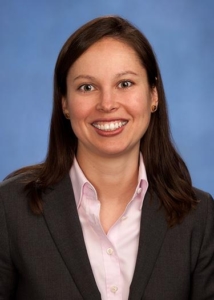This week we are profiling amazing women in investment management ahead of our annual career panel event on the 5th November for women in the industry who want to make it to the top.
In 1989, Laurie Carroll became a breast cancer survivor. “Being a breast cancer survivor in a male dominated atmosphere was hard, but it motivated me to work even harder and embrace every challenge,” said Carroll, “and I had a lot of supportive male colleagues around me who understood what I was going through.”
Laurie Carroll graduated from Seton Hill University with a degree in Business Management. At the time she attended, Seton Hill was a women’s college. “I wish I knew at the time that I wouldn’t necessarily be accepted in the business world,” said Carroll. “Within my family, and within the tight knit community at Seton Hill, you were never told that you couldn’t achieve something,” she added.
“That was really eye-opening for me. For example, when I started at BNY Mellon over 20 years ago, I wasn’t invited to the investment management meeting even though I was managing money,” Carroll said. “This has changed,” added Carroll. “Women are more involved and they are moving higher within the industry.”
Career Path
“When I graduated from college, Pittsburgh did not have the strongest job market, so I bought a one-way ticket to Houston where some of my family members lived,” said Carroll. Within three days Carroll found a position at an up and coming investment management firm called Aim Management. “I was hired to do basic office work,” recalled Carroll, “but that is how I got my start in the industry. I was about the 20th person to be hired at the company, which was later sold to Invesco.”
Carroll learned the business of investment management by being proactive and taking advantage of opportunities to advance her career whenever she could. She explained, “Whenever someone left the company or something changed, I asked to take on the new role or task. This is how I moved up in the business.”
After five or six years of working in the investment management industry in Houston, Carroll moved back to the Pittsburgh area when she accepted a position at one of the first investment management divisions at BNY Mellon. Since then, Carroll has worked in several investment management subsidiaries of BNY Mellon. “I am proud of the flexibility I have displayed throughout my career,” said Carroll, “and I am proud of the great teams I have had the opportunity to manage.”
Another career highlight Carroll noted as critical to her professional development was the international assignment she accepted a couple of years ago, to live and work in London. “I knew working abroad would be challenging on both a professional and a personal level. There is a different atmosphere and a different way of doing things, so I had to learn how to fit in to that culture,” said Carroll.










